
Right from the beginning, it was clear there was something special about Fender’s Telecaster guitar; one of the first ever true solid body electric guitars. It became an instant hit with guitarists when Leo Fender first released it in the autumn of 1950 and has never been out of production since, remaining one of the most popular and iconic guitars in the world today.
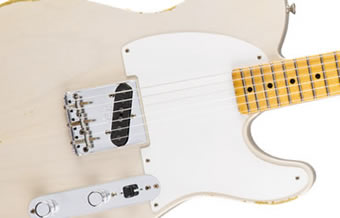
Following the popularity of the original run, a two pick-up model with a much-needed truss rod was quickly introduced in early 1951 under the name 'Fender Broadcaster'. However, following a dispute with Gretsch Guitars over a copyright issue concerning the name ‘Broadcaster’ Fender had to come up with a new name, and so in the summer of 1951 the first ever 'Fender Telecaster' was produced. Despite a few tweaks and modifications down the years this guitar was pretty much the same that you can buy today, more than half a century later.
Famous Artists
Trying to pin the Telecaster down to one genre is almost impossible; one of the truly astonishing things about this guitar is that throughout its long history it has been the guitar of choice for countless guitarists playing almost every style of music imaginable. As far back as the 1950s it found fame in the hands of country legend James Burton, nicknamed ‘The Master of the Telecaster’, and Blues icon Muddy Waters, who's red Tele became a staple of his raw bluesy sound.
Turn on almost any Stax Soul record from the ‘60s and chances are you’ll be listening to the slick guitar work of Steve Cropper, resident guitarist in Stax’s house band and lifelong Telecaster devotee. Steve's simple and restrained playing style, perfectly complimented by the Telecaster’s no frills philosophy, provided the perfect backing to countless classic hits from Otis Redding, Sam and Dave, and Booker T and the MGs to name just a few. In the late 1960s the Telecaster further built on its reputation as an outstanding blues rock guitar when Jimmy Page made it his main instrument during his tenure in the Yardbirds and, in the later years of the Beatles, George Harrison experimented with a Telecaster on the 'Let it Be' album.
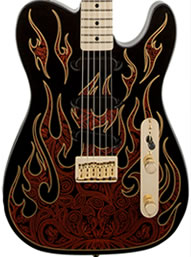
However, it wasn’t until the early 1970s that two of the most iconic Telecaster players ever made it their guitar of choice. After trying out a range of guitars throughout the early years of the Rolling Stones, Keith Richards eventually settled on a customised 1953 Blonde Telecaster, nicknamed ‘Micawber’, given to him by Eric Clapton as a 27th birthday present and modified with a humbucker in the neck position to give him some extra bite. 63 years after its birth 'Micawber' has become one the most iconic instruments in rock n roll history. The other truly iconic Telecaster player, almost impossible to picture without his famous guitar strapped around his neck, is Bruce Springsteen - although if we’re being technical, Bruce’s most famous guitar is actually a heavily modified Fender Esquire, one of the earlier Telecaster prototypes. However, for all intents and purposes, it’s the trademark tone of the Telecaster that has been the staple of Springsteen’s sound for decades.
The Telecaster’s popularity hasn’t waned over the years and you can still see it in the hands of many of the most esteemed guitarists around today spanning a whole range of genres, from the unique alternative rock style of Radiohead’s Johnny Greenwood, to the heavy metal shredding of John 5 and Slipknot’s Jim Root. Throughout its long and eventful history, the Telecaster has carved a place for itself in almost every musical genre out there, thanks to its simple design, classic tone and unrivalled versatility.
Telecaster Design
- The Telecaster body shape is among the most instantly recognisable guitar designs in the world. Famed for its stripped back, no frills design, the Telecaster has been a favourite among guitarists since its inception more than half a century ago. Although Fender have tried some alterations on the classic Telecaster body shape over the years, including a short-lived ‘notchless’ design where the upper bout of the body met the neck at a much flatter angle, the much-loved Telecaster body shape has barely changed since the very first model was designed by Leo Fender himself.
- A real Fender Telecaster is also distinguishable by its iconic slim headstock. Apart from a brief run in the 70s when Fender tried out a model with the much bigger Stratocaster headstock, this design hasn’t changed since the very first Esquire model. All real Fender Telecasters feature the iconic Fender logo stamped on the headstock - printed in black with a gold trim on Mexican models and silver with a black trim on American made models.
- Most guitar builders in the '50s almost exclusively used mahogany necks with the fingerboard glued on, a process that was costly and time consuming. The very Telecaster models were revolutionary in that they used one-piece maple necks which were bolted rather than glued to the body, greatly speeding up construction time and meaning the guitar could be mass produced to meet growing demand.

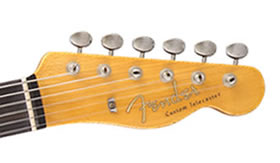
The Telecaster Sound
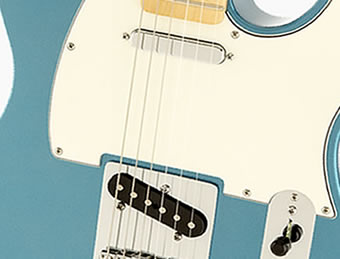
As iconic as the Telecaster’s design is, it’s the ‘Telecaster sound’ that really defines this guitar – ask any experienced guitarist and they could recognise a Tele just by the way it sounds. The signature twang of the bridge pickup and the smooth rich tone of the neck pickup can be heard on countless classic records down the years - a true piece of musical history!
The feature of the Telecaster that has changed most over the years is the pickup selector, as Fender experimented with a few designs to get the perfect balance of tone control for the classic Tele sound. On the original 1950 model, the three-way selector gave the choice of the neck pick-up with treble tone cut down, the natural neck pickup tone and, in the third position, a blend of the two pickups with the balance adjusted using the guitar’s tone knob, meaning that the original Telecaster has no true tone knob or bridge pick-up setting. It wasn’t until 1967 that Fender adopted a traditional three-way selector system, found on almost all Telecasters today, which gives you total control over your guitar’s tone and allows you to hone that perfect Telecaster sound.
Fender- The Best Choice
Obviously, with such an iconic guitar, it’s not surprising that countless copies and Telecaster rip-offs have been produced by rival companies over the years, but for that genuine Telecaster look and feel it doesn’t make sense to go for anything other than a Fender or Squier original! The build quality on a Fender guitar puts competitors to shame and they also come with a two year warranty, so you don’t have to worry about anything going wrong. Prices are very reasonable, starting at just £170 for a Squier Telecaster. You’ll have to shell out a bit more for a Mexican or American made Fender Telecaster, but you get an absolutely stunning bit of kit for your money - any real Fender Tele really does represent great value for money.
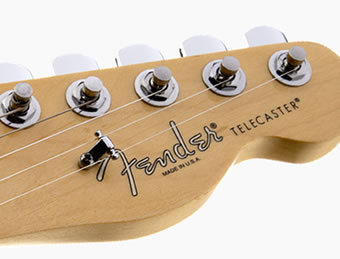
See our range of Fender Telecasters
